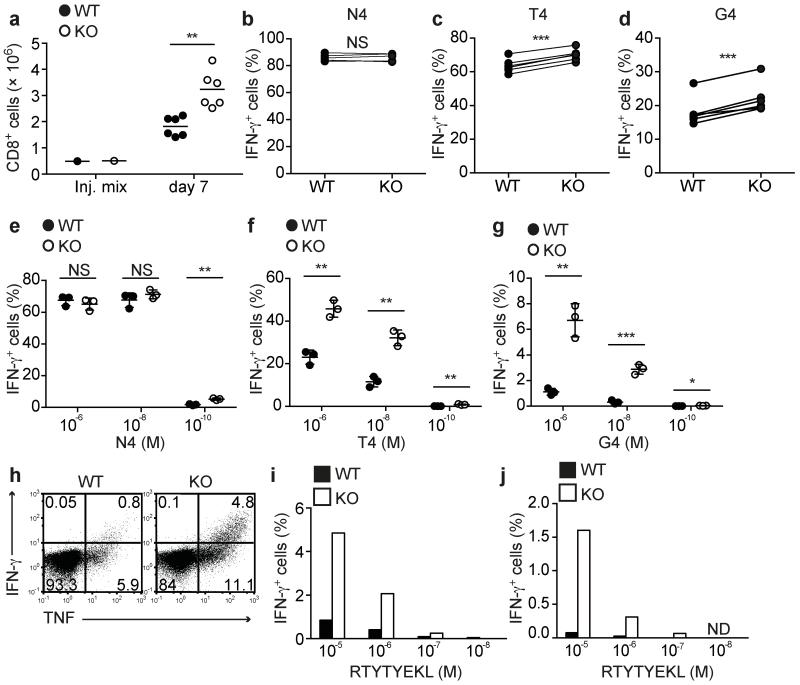Figure 5.
Ptpn22 restrains weak agonist-induced inflammatory cytokine production by effector CTLs. (a-d) Day 7 CTLs were generated in vivo by co-transfer of WT CD45.1+ and Ptpn22−/− (KO) CD45.2+ Rag1−/− OT-1 cells at a ~1:1 ratio to Rag1−/− hosts followed by LmOva infection (n=6 mice/group). (a) Absolute numbers of recovered CTLs from recipient mice at d7 post-infection. Amounts of intracellular IFN-γ production by ex vivo CTLs following 4h re-stimulation with 10−6 M N4 (b), T4 (c) or G4 (d) peptides. Dots connected by lines represent paired WT and Ptpn22−/− CTL samples retrieved from the same recipient mouse. (e-j) CTLs were generated in vitro by N4 peptide stimulation followed by expansion and differentiation in IL-2 or IL-15. Dose responses of IL-2-differentiated WT and KO CTLs following 4h re-stimulation with N4 (e), T4 (f) or G4 (g) peptides (n=3 mice/group). Lines represent mean values and dots represent CTLs generated from individual mice of each genotype. NS – not significant, * p<0.05, ** p<0.01, *** p<0.001 by two-tailed unpaired Student’s t-test. (h) Representative dotplot showing IFN-γ and TNF production following re-stimulation of IL-2 generated CTLs with 10−5 M RTYTYEKL. Dose response of RTYTYEKL-induced IFN-γ production by IL-2-generated (i) and IL-15-generated (j) CTLs; data are from 1 of 3 repeated experiments. ND – not detectable.

